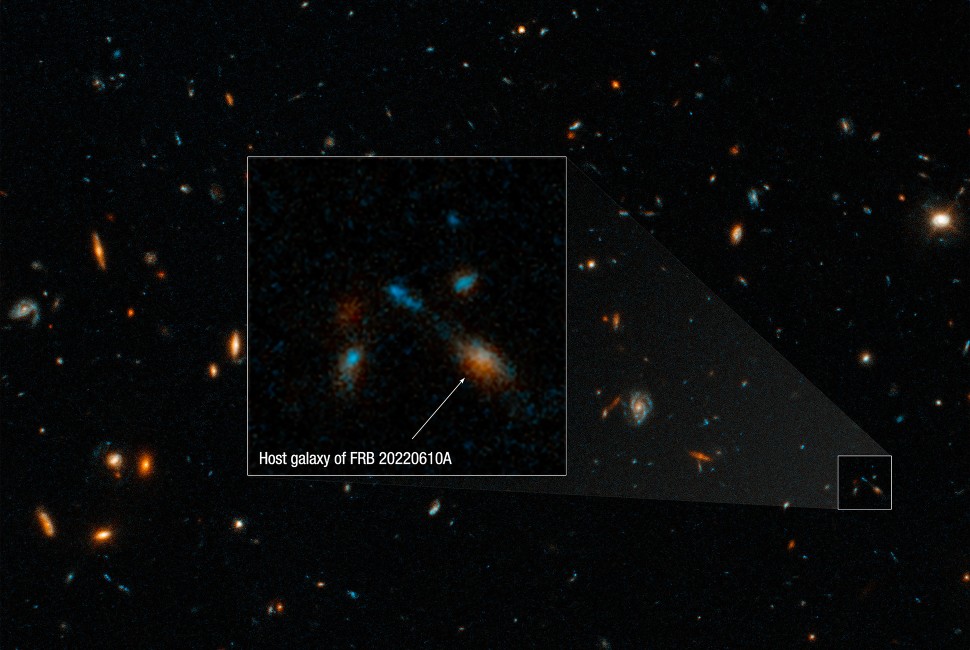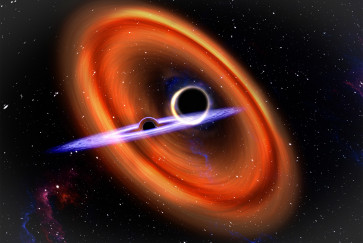In summer 2022, astronomers detected the most powerful fast radio burst (FRB) ever observed. And coming from a location that dates halfway back to the Big Bang, it also was the farthest known FRB spotted to date.
Now, astronomers led by Northwestern University have pinpointed the extraordinary object’s birthplace — and it’s rather curious, indeed.
Using images from NASA’s Hubble Space Telescope, the researchers traced the FRB back to not one galaxy but a group of at least seven galaxies. The galaxies in the collection appear to be interacting with one another — perhaps even on the path to a potential merger. Such groups of galaxies are rare and possibly led to conditions that triggered the FRB.
The unexpected finding might challenge scientific models of how FRBs are produced and what produces them.
“Without the Hubble’s imaging, it would still remain a mystery as to whether this FRB originated from one monolithic galaxy or from some type of interacting system,” said Northwestern’s Alexa Gordon, who led the study. “It’s these types of environments — these weird ones — that drive us toward a better understanding of the mystery of FRBs.”
Gordon will present this research during the 243rd meeting of the American Astronomical Society in New Orleans, Louisiana. “Revealing the Environment of the Most Distant Fast Radio Burst with the Hubble Space Telescope” will take place at 2:15 p.m. CST on Tuesday (Jan. 9) as a part of a session on “High-Energy Phenomena and Their Origins.” Reporters can register here.
Gordon is a graduate student in astronomy at Northwestern’s Weinberg College of Arts and Sciences, where she is advised by study co-author Wen-fai Fong, an associate professor of physics and astronomy. Fong and Gordon also are members of the Center for Interdisciplinary Exploration and Research in Astrophysics (CIERA).
Birth from a blob?
Flaring up and disappearing within milliseconds, FRBs are brief, powerful radio blasts that generate more energy in one quick burst than our sun emits in an entire year. And the record-breaking FRB (dubbed FRB 20220610A) was even more extreme than its predecessors.
Not only was it four times more energetic than closer FRBs, it also clocked in as the most distant FRB yet discovered. When FRB 20220610A originated, the universe was just 5 billion years old. (For comparison, the universe is now 13.8 billion years old.)
In early observations, the burst appeared to have originated near an unidentifiable, amorphous blob, which astronomers initially thought was either a single, irregular galaxy or a group of three distant galaxies. But, in a new twist, the Hubble’s sharp images now suggest the blob might be as least as many as seven galaxies in incredibly close proximity to one another. In fact, the galaxies are so close to one another that they could all fit inside our own Milky Way.



